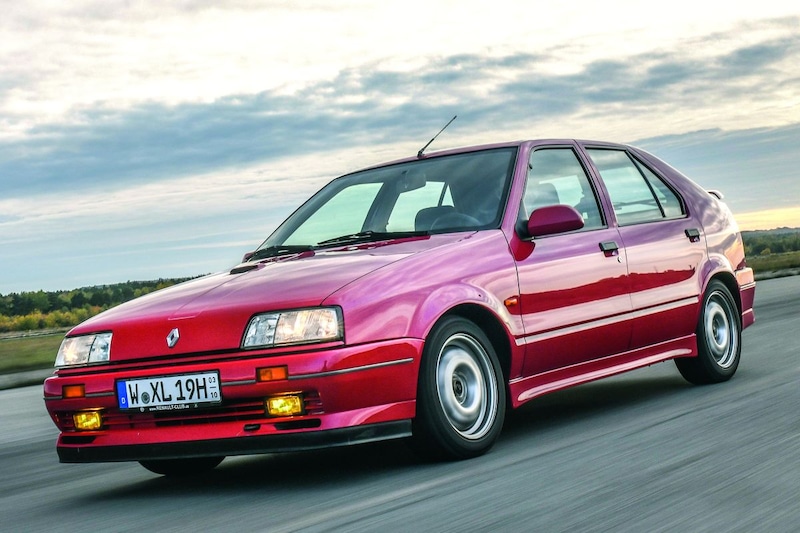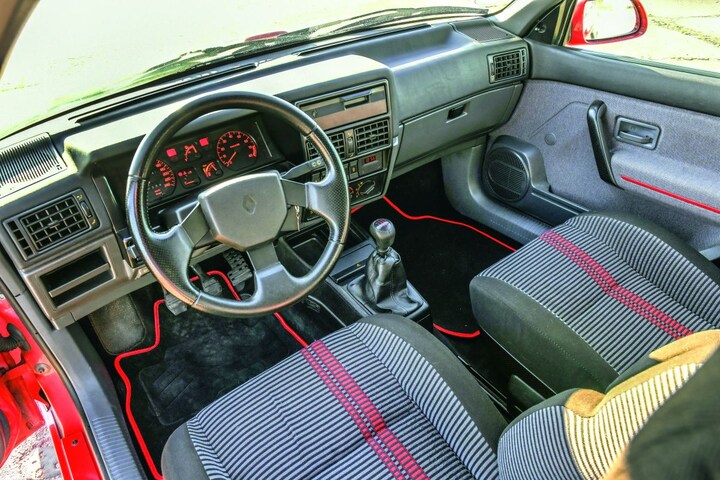Later came block in Clio


The Renault 19 16V was the hot version of the 19 launched in 1988. A sixteen-valve engine, and no turbo, which until then was the boost to make Renaults extra hot. The 16V engine would later also come to the Clio, but for this test drive we go to the beginnings of Renault’s 16V in the hatchback that was simply called 19 16V.
Fast Renaults go by the name Turbo or Alpine. Until well into the 1980s, this seemed to be an unwritten law. However, this law was reversed under the leadership of former Alpine driver Jacques Cheinisse: the X53 project was launched at the end of 1983, which resulted in the Renault 19. Project manager Cheinisse introduced Renault’s first 16-valve engine. At that time, fuel consumption, exhaust emissions and costs were not in favor of turbos, but against them. The basis for the power source was the good old Cléon-Fonte engine, a design from 1962 that was named after the engine factory where it was born. No fewer than 27 million units of this engine family had been built in 2004.

Renault, previously a turbo expert, introduced the 16V naturally aspirated engine in 1990, the engine code was F7P.
140 hp without cat, with cat 135
For the Renault 19, the 1,721-cc engine was bored out by a millimeter and the four-valve head with two camshafts was added. The result: 1,764 cubic centimeters of cylinder capacity and a power of 140 hp without cat and 135 hp in the catalytic version like the test car. That is 30 hp more than the Renault 11 top model 1.4 Turbo, but the torque was 5 newton meters lower. The characteristics of the car we drive are the same as back then: very grumbling below 1,500 rpm, after which it revs inconspicuously. Just above 4,000 rpm, a slight extra boost and an aggressive undertone are noticeable. It pulls hard up to 6,000 rpm, from there to 7,000 rpm the power remains more or less the same. So a typical 16V. The clutch feels heavy, but the gear lever can be guided precisely through the gears. The steering: more direct than you would expect from a Renault. It rounds the cones with light understeer, and only in the final stretch of the moose test does the rear end get a little movement.

Renault 19 feels very solid
Even though the material quality and finish in detail are not of top level: with its solid doors that lock and the good insulation, it sounds and feels very solid. It appears high-quality and expensive, like a sedan that wants to offer both comfort and sportiness. Jacques Cheinisse had set the Golf as a benchmark – and you feel that in the Renault 19. The suspension of the test car is adjusted a little stiffer than usual, which does not suit it at all, it feels jerky on bumps and dampens slightly less well than you would expect. expected. In short, this 19 certainly does not live up to all the prejudices that exist towards French cars.

– Thanks for information from Autoweek.nl





